GAMES
1,622
Replaying FFVII For The First Time In ~15 Years?
3 years ago
Final Fantasy VII was a huge part of my childhood and one of the primary inspirations of my own work, and revisiting it as (ostensibly) an adult has been an interesting experience!
![]()
This game was released in 1997, and is now about 25 years old. That's a fairly horrifying thought!
I think it was actually the first RPG I ever played. I remember playing a demo of it on my older brother's Playstation (1), and him saying I, a child, 'wouldn't understand' an RPG, which has amused me over the years as I went on to make them myself. I later got a copy of the full game of my own - for a birthday, I think, where I was taken to a games shop and allowed to freely pick one? - and spent many, many hours with it. Like with a lot of games I had back then, I played the beginning bits over and over, but unlike with most, I actually finished this one, multiple times.
I
think the last time I played it was when I was with the only girlfriend I've ever had - as in we played it together, as I don't think she'd played any Final Fantasies before or something? - so I must have been around 20ish, give or take a year or two? Maybe? I'm really unsure though! Maybe I played it again since then?? Though I can't remember when, if I did.
It felt like some ancient thing from my distant childhood back then, even though it probably would have been less than a decade since I'd last played it... It's been even longer between then and now.
So considering that, I was wondering whether this return to it - via the port available on the Switch - would be intensely familiar or not.
![]()
I vaguely remember that one of the many times I played this game as a child, I called everyone Sephiroth. Har har. Because that's the villain's name, you see. Sephiroth. And you can give your characters silly names. Like Big Boy. Or Sephiroth. You see.
As it turns out it, 'intensely familiar' is indeed an accurate description of my 6 or 7 (?) hours of experience with it so far! (Or rather, I started writing this several days ago and I'm around 10-12 hours in now.) This Switch port seems to use the exact translation as the version I played as a child - with all the many typos, grammatical mistakes, Engrish, and other general translation issues intact (though I wonder how perfectly-written the original Japanese version was) - and every single line, scene, and visual detail feels as familiar as the back of my hand (maybe moreso, I say, after actually looking at the back of my hand).
I've been enjoying it so far, I'd say. Mostly it's the familiarity effect of, say, comfort food, or rewatching a much-loved TV show for the umpteenth time: there's nothing scary to be surprised by or to adapt to. But I can also acknowledge its shortcomings, and - to my surprise, actually - I've gained a new appreciation for some aspects too, especially after thinking a whole lot about my own game's mechanics and narrative.
I've got through what felt like a lifetime of hard adventuring back in the day over a handful of days, which fits with what I talked about in the Weekly Update the other day.
![]()
I'd never seen this scene before! I'm surprised to see that 'daddy' was being used back then the same as it is now.
There's a silly section - Wall Market - with a bunch of stuff that wouldn't pass politically these days! Cloud dresses up as a woman to get chosen by some creepy 'powerful' man for sex. I'm very curious about how the Remake version handled all this, though I'd rather find out myself so I'll probably play that after I've finished this (don't tell me if you know).
![]()
Such an interesting aesthetic decision, to go with these highly stylised models made of ultra-low-poly, untextured parts that don't connect rather than a single skinned mesh; presumably this was the devs' first 3D project and they didn't have the confidence for something more complex? But the backgrounds are clearly renders of fairly high poly 3D. I still don't understand how they were done!
That section includes some kind of... sex club? Gentleman's club? Not sure what you'd call it; I imagine it's based on something specifically Japanese? Love hotel? Something like that? It's called the Honeybee Inn, and when I was little I never found out how to get inside, and wondered a whole lot whether it was even possible. Over the years, I was convinced it was cut content. But this time, I was determined to find my way in, to put that childhood curiosity and frustration to rest.
Turns out there's a specific window - while you've activated the 'intending to dress as a woman' state but before you've actually done so - during which some random NPC will give you a member's card to get in... which I only realised after going through the whole Cloud-dressing-as-a-woman bit, failing to get it, then checking a walkthrough (I doubt this'll be the last time I'll be checking one) and doing it all again.
![]()
It's full of bizarre scenes, like Cloud getting in a bath with a whole bunch of very friendly burly men (I wonder if the Remake kept THAT!), watching what I THINK was the Shinra president doing some weird roleplay as a king (??), and a scene where Cloud encounters a ghost version of himself that... huh??
![]()
That ties into something that I never understood as a child, and which I was curious to see whether it'd make any more sense to me now. There are these scenes where Cloud seems to talk to a voice, or something, but - even though I at least vaguely remember all the future plot developments - it just appears as plain text so I'm not entirely sure who it's supposed to be. Some alter ego of his? Zack('s memories)? Jenova? The Planet? I suppose that'll be massively clarified in the Remake via voice acting, if it's been kept (so again I'd rather just wait until I play that than be told the answer now).
(Though I can't say I ever fully understood what Cloud's whole
deal was, so I'm hoping it'll make more sense to me this time around.)
![]()
This is apparently the finger above Cloud's head speaking. I always found these bizarre, silly details in an otherwise mostly serious game weirdly interesting!
It's unclear who's saying what a lot of the time, actually, because the dialogue boxes only include the character's name in written text, at best; sometimes the name's just omitted entirely, and the boxes are all over the screen with no apparent spatial link to who they're coming from (I always wondered about the technical aspects of this; were the box's size and position stored for each line?). It's made some scenes so far hard to follow, or I've realised after reading a line that I did so with the wrong character's voice.
Regarding the writing/story in general, it's... what it is. I wouldn't call it Fine Literature or anything - there are a good amount of lines of dialogue, but a lot of them are just poorly-written/translated - but I was surprised by how quickly some characters' personalities - or Cloud's/the player's connections with them - were able to be established, and I think the story moves fairly quickly through some interesting-enough plot beats... Though it's tough to parse out the fact that I've spent many years with them in the past, so it's not like these are my first impressions or anything.
The structure is interesting in that it has what feels like an intro section, set in Midgar... which I completed the other day after like six or seven hours, I think? Longer than a lot of full games! I remember when I was little, how the idea of exiting Midgar felt like this
huge thing, like the world map was the endgame - maybe I mentioned my own doing so to try and impress aforementioned older brother, or something? - but the journey's still just beginning, which is somewhat exciting even to me now.
![]()
I always thought the slums you spend most of this section in were part of 'Midgar', but some lines suggest 'Midgar' is the name of the separate city suspended above them?
Speaking of Midgar, I think the game's fairly remarkable for having grungy sci-fi aspects when other RPGs of the time were sticking with high fantasy; the previous six Final Fantasies also explored such things, but not to the extent they are here. Some of the character designs - especially Barret, a big, burly black man - stand out positively among the fey bishies I'd expect to see from a Japanese RPG (though Cloud and Sephiroth are perfect examples of such).
I also really loved the inclusion of non-human protagonists, particularly Red XIII/Nanaki, and that inspired my decisions in my own games years later (eg Solaar).
![]()
There are a lot more little details and optional, missable things than I expected or remembered. For example, you can search these drawers in a random child's bedroom, with only the middle one containing anything: a mere 5 gil. If you leave it, you can come back later and find out the boy invested his cash; he gives you a relatively rare and expensive item as thanks. Little details like this make the world feel deep and alive, I suppose, though they also make my head spin a bit as the developer, thinking of the effort involved in adding - and keeping track of - them all! And the completionist in me doesn't exactly love the idea that it's impossible to see every single thing during a single playthrough!
![]()
The
music was one of the most appealing aspects of these Final Fantasies for me - I'd get excited when I knew scenes with certain tracks were coming up, and I'd keep saves before them so I could revisit and just sit and listen for several minutes whenever I wanted - and Nobuo Uematsu's compositions were one of the biggest inspirations for me both to make music in the first place and how to structure it (he uses a lot of fairly straightforward, repeating arpeggiated chords, few instruments, moderate tempos, and strong melodies, rather than some intricate, fluttering web of virtuosic texture; it's not difficult to pick out every note, which I love).
Even though I've listened to the soundtrack a billion times in the years since I last played this, I was surprised by how effectively it evoked moods for me during these early sections.
There's a lot of what I'd call 'mood music' rather than 'specific area music' during these bits, and a lot of it plays for fairly long periods, evoking - for me at least - a kind of transportive, dreamlike quality, especially with the lack of other sounds, like voice acting. Again, though, a big part of that could just be the effect of pleasantly fuzzy nostalgia.
I also particularly like how Uematsu was able to evoke what feel likes the perfect atmosphere for some seedy, sleazy, silly-/ish/ slum section; these days, I'd expect some kind of grungy, metallic, unpleasant ambience rather than something like this.
![]()
Ugh, I hate this oh-so-silly name choice of mine and keep wishing I could change it to 'That Girl' because it's used way more than I expected and 'That' fits way better with the contexts it's been used in so far but I can't change it and that annoys me even though it'd be stupid if you COULD change names mid-game aaaggghh!!1
'Aeris' is the character who joins you in this game, which was apparently a mistranslation of 'Aerith', which she's officially called these days. Personally I feel 'Aeris' has a heavenly, celestial quality to it, while 'Aerith' sounds too lispy, but I get it was from 'Earth' to go with the wind-themed 'Cloud', so WHATEVER!
There's this bit where Aeritsthsth has insisted on escorting Cloud around the slums, where you pass through a playground and they briefly - very briefly, just a few words, which I was surprised by because the scene felt so full and long back when I was little - talk, mentioning her ex boyfriend who was in SOLDIER (these Final Fantasies loved these not-actually-acronyms; AVALANCHE, SeeD, etc). I felt that the dreamlike quality of the music gave this bit a more intimate, pleasant feel than I was expecting, or something.
There's a lot of focus on these relationships between various girls and Cloud; maybe some wish fulfillment on the devs' part, or a manifestation of their own perceptions of life, the world, and the women in them? Both Tifa and Aeristhst are portrayed as if they're rivals for his affections, and Jessie, a member of AVALANCHE, has some interactions with him that hint at interest, or which appeal to the desire for a mother surrogate which plays a role in attraction for a lot of men (as I understand it now with my fancy Psychology degree).
![]()
Such as disappointedly chiding him for his tasteless minstrel act. Also, one of the most well-known things about FFVII is that Aerisths DIES mid-way through, but it was quite a stab this time when Jessie - who there'd been a few little bonding scenes with - fell in battle. I don't think I ever really thought about the deaths of the other AVALANCHE members when I was little. ALSO SPOILERS for an ancient game you've probably already played if you're reading this.
There are also quite a lot of little dialogue options you can select between - or you can choose who to, say, check on first in prison, or help up after you land in a sewer - which I know eventually lead to either Tifa, Aeristhsth, or - oh so comically because ha ha gay funny - Barret, the big tough guy, asking Cloud on a date, depending on who you favour. An interesting detail to add, done through hidden variables with no hint of what any of it's leading to, rather than, say, having a 'BARRET RELATIONSHIP METER' that has some UI thing saying '+1 HEARTS' or whatever! Feels more organic, but also harder to get one if you're hoping for it.
![]()
I've been paying attention to a lot of design choices and technical details, especially of the battle system, analysing how they compare to Atonal Dreams, of course.
![]()
I called him Mr T because I am a very creative person. I probably called him that at least once when I was little, too!
There's an intro section where you blow up a Mako reactor, which only really includes a very brief 'tutorial' in the form of this line that comes up in the boss battle, which is
supposed to familiarise you with the Active Time Battle system... but it's mistranslated, so it tells you to do exactly the opposite of what you're supposed to! (It counters with its tail up, so you're supposed to just wait.) Always confused me as a child.
This is followed by a calmer section, where you can see a bunch of tutorials, but have to go out of your way and explore a bit to do so; I think I missed them at first, as a child.
![]()
Weirdly, this tutorial is shown twice: the first time, Barret explicitly asks Cloud about materia in a forced plot scene - maybe the devs realised it was necessary to do this when testers struggled? - but you can also access it along with the other tutorials in a training room. But they seem to be stored differently in the data, because the translations of the lines are slightly different, with both translations of this line (which should probably say 'your status changes' or something) being inaccurate in different ways.
Interestingly, they're delivered by Cloud, explaining how to battle, as he's the one who (ostensibly) used to be in SOLDIER and as such has more combat experience than the NPC you're talking to; I liked that character-establishing detail. They're just raw text though, and go into way more detail than I feel is necessary about some things... though at this point I can't even imagine what it's like to not have an understanding of RPG fundamentals like what HP and MP are.
![]()
One explains this section of the status screen, where status effects - or 'added effects', which may be a mistranslation - are listed. Most of them I at least vaguely understand/remember, but what on Earth is 'Peerless'?? And some (eg Manipulate) make no sense to include here! (Unless you can actually link the Manipulate materia to the added effect one so normal attacks have a chance to take control of enemies?? Hmm, I'll have to try that later...)
Interestingly, there are two states - Fury and Sadness - which work not-dissimilarly to things I have in Atonal Dreams. Fury increases the speed at which the Limit gauge fills, but reduces accuracy, while Sadness slows Limit building but reduces damage received. Generally I dislike these 'bitty' status effects, where there are a bunch with all kinds of effects and some are only used by a handful of enemies, if that; MARDEK's status effects were the same, inspired by RPGs like this. I prefer things like Pokemon, where you only have a handful, but they're common and well-understood (though that's hardly a perfect example; I don't like the volatile/non-volatile statuses thing).
![]()
The battle UI also has two big, obvious bars marked 'BARRIER', which I find odd because I don't think those are used all that often? Seems sloppy to devote the space for just that, especially with the weird divide between to the right of it for no apparent reason? At least HP and MP have bars, though, rather than being raw numbers like most (early) Final Fantasies; I appreciate that. (But why is HP blue and MP green?!?!?)
![]()
I also noticed this time around - but never before - that there's a black bar at the bottom of the screen; it's not due to emulation, because the menu here extends into it. Odd. I wonder if it was to reduce processing strain or something.
The battles themselves are straightforward. As a child, I just used Attack over and over and healed when necessary. This time, I thought, after all the growth and learning and development of my own that I've gone through since then, I'd do something more skillful. But there really aren't options to do so! Really all you can do is just Attack or use magic, both of which just deal basic damage, but the former is free and MP is limited, so magic just seems like the worst option in many cases.
I've been surprised by how frequently enemies attack; some RPGs allow you to basically wipe the enemy party before they can do anything, especially at the beginning. I also find the attack animations interesting: they move (not exactly run) physically to you, strike, then instantly return to their starting point, completely ignoring a bit I've devoted and effort to trying to solve myself. Which looks fine, so maybe I shouldn't bother either!!
I'd say I've gained a new appreciation for the Active Time Battle system though, as you can input commands while others are being executed; perhaps this was why it appealed to its creators? (Back when it was introduced in... FFVI? IV? Earlier??)
![]()
This seems more valuable to me now I have more experience with RPGs; child-me didn't really understand a lot of the non-attacking materia.
I really like the materia system, at least aesthetically; I always adored those colour-coded crystalline orbs you could place into slots. I also like that weapon and 'armour' value is tied to number of materia slots rather than just some attack or defence value, so acquiring new equipment also kind of unlocks additional skills, or the potential for them at least. Also interesting that they went with just three slots, with 'armour' taking the form of armlets rather than characters wearing, say, Chainmail but looking shirtless on their model or whatever.
I also really like pairing materia together to get additional effects, so you could, say, pair Fire with All for an AOE, or with Elemental on the weapon to deal Fire damage with normal attacks, or with Elemental on the armour/armlet to resist Fire. Again, I have more appreciation for the elegance and versatility of that now than I did back then!
Materia can level up, and adjusts stats, both of which I remember largely ignoring when I was little. I remember it felt like forever to gain an extra materia level, though the whole game felt like it took forever; I wonder if I'll be going through materia levels before I know it with this playthrough.
I feel the balance between limitations and versatility of available materia at this point works very well (mostly basic elemental damaging spells, a cure, plus a single All and a couple of interesting utility ones (Cover - essentially a kind of randomised Taunt - and Steal).
![]()
I wrote this a couple of days ago, but keep getting distracted before I can finish and post it!
![]()
Since then, I've done more. There's this scene after Midgar where everyone gets into position like they're doing some kind of intervention and randomly asks Cloud to reveal his past. Why?!? It's hardly led into organically!
![]()
During this bit, you have Sephiroth on your party. I remembered this, but forgot you could do more than one battle with him as an ally, or view his status in the menu. He has a portrait! Genuinely exciting to me as a child, as was seeing Young Cloud's (who's 16 and already risen through the ranks of SOLDIER through many past missions; anime/JRPG ages are silly). I always appreciate it when stats like levels are used to reflect characters' actual narrative power rather than being purely for gameplay.
Being able to see the villain's AMAZING POWER and backstory like this is a great move for this sort of thing; much better than having some impersonal Evil King or whatever, and even better - I'd say - than having some ally you previously trusted suddenly turn EEEEVIL as a twist, as happens in many a JRPG (a couple immediately jump to mind)... though his transition from legendary warrior to town-torching psycho feels completely abrupt and based on too little.
The whole section's interesting though in that it's
pure story. It's fairly long, but you gain absolutely no statistical character growth or items or anything through any of it. And yet it apparently worked for me and for all the many other people who adored this game so much. Interesting.
![]()
I failed to finish writing this AGAIN and played some more. After that bit, you have to catch a chocobo to travel across a marsh to avoid a big monster... but you can also choose to battle it, which is nice. Things like this are really giving me ideas for things I can do with Atonal Dreams.
When I was little, I saw it as was intended - an overpowering force to avoid - but I was curious to see whether I was able to best it knowing what I know now. And I did on my first try!
![]()
But I was aware it has access to an 'Enemy Skill' called, for some reason, 'Beta', which is relatively cheap and very overpowered, so I wanted to get that (which you have to do by enduring a hit from it)... which took like a dozen attempts, where I repeatedly 'acquired' the skill but the battle ended in a way other than victory, so it didn't count. What an annoying mechanic!
I gained more appreciation for the front/back row mechanic than I used to, though - being on the back row halves damage delivered and received from physical attacks - which I think has been with the series since maybe the very first entry?
![]()
Collecting the Enemy Skills was one of the most appealing things about the game to me, and already I'm feeling the same way about it; it - and Final Fantasy's other Blue Magic systems - partly inspired what I'm doing in Atonal Dreams. I vividly remember where and how to get the most important ones! Though it seems a bit overpowered that a single piece of materia can grant a whole bunch of abilities in a single slot!
![]()
Pfff, finally, I'll stop adding to this damn thing and post it! These always turn out way too long! Even though pretty much nobody reads them. Oh well. This game has played an important role in my life, so it felt wrong to not at least comment about my return to it after all these years!
I'm looking forward to playing the Remake after this, and want to go in entirely blind, to be surprised by things, so please don't mention anything about that if you've played it! (I say, because these game 'review' posts always get sooo many comments.)





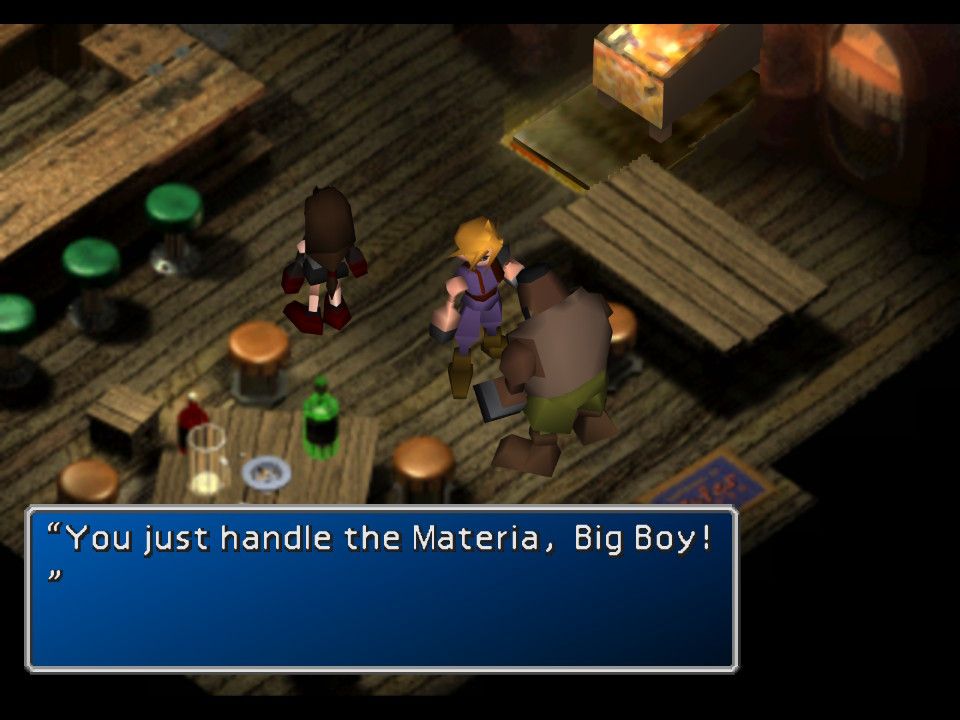
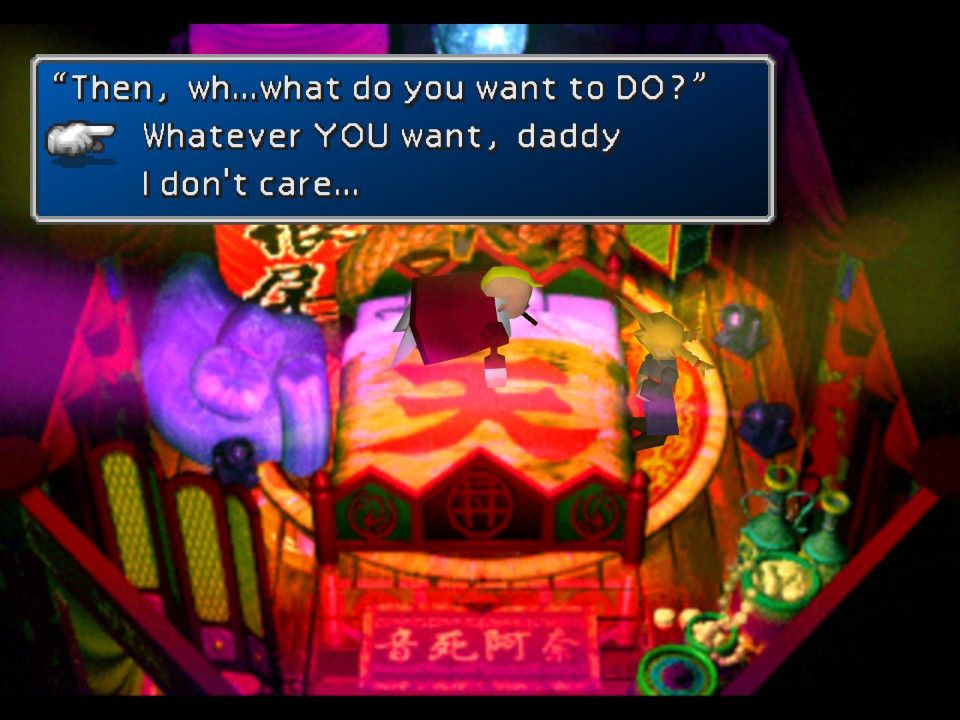
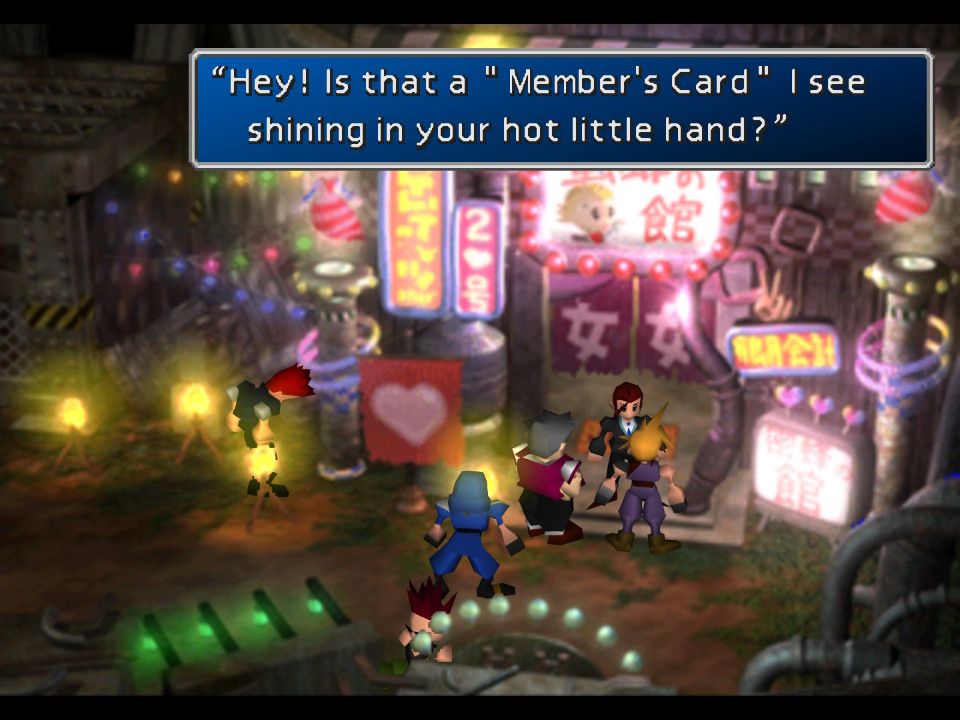
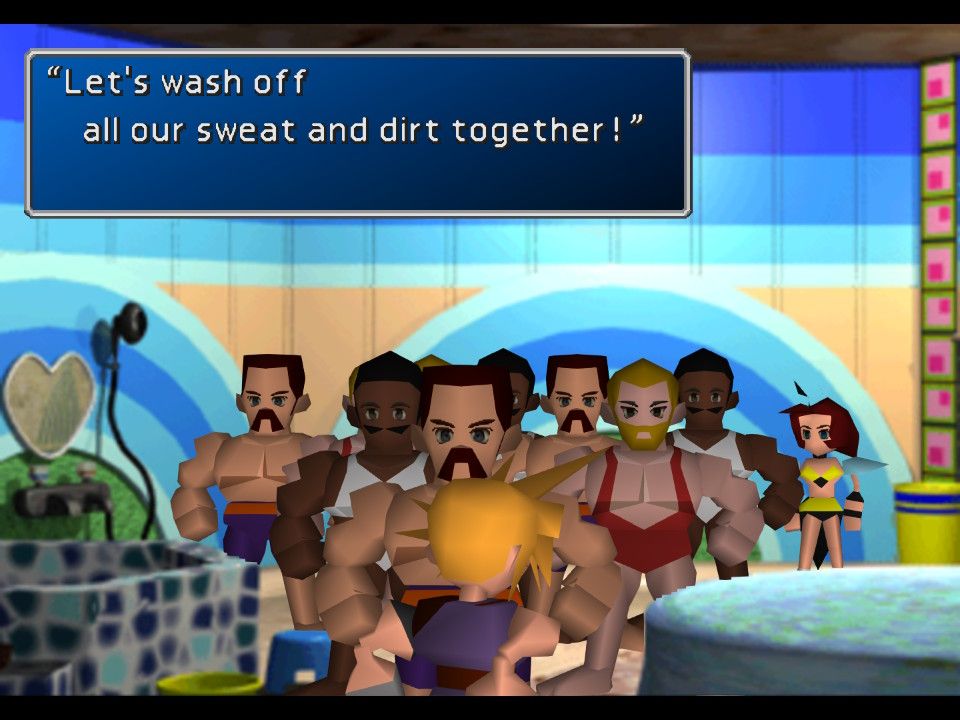
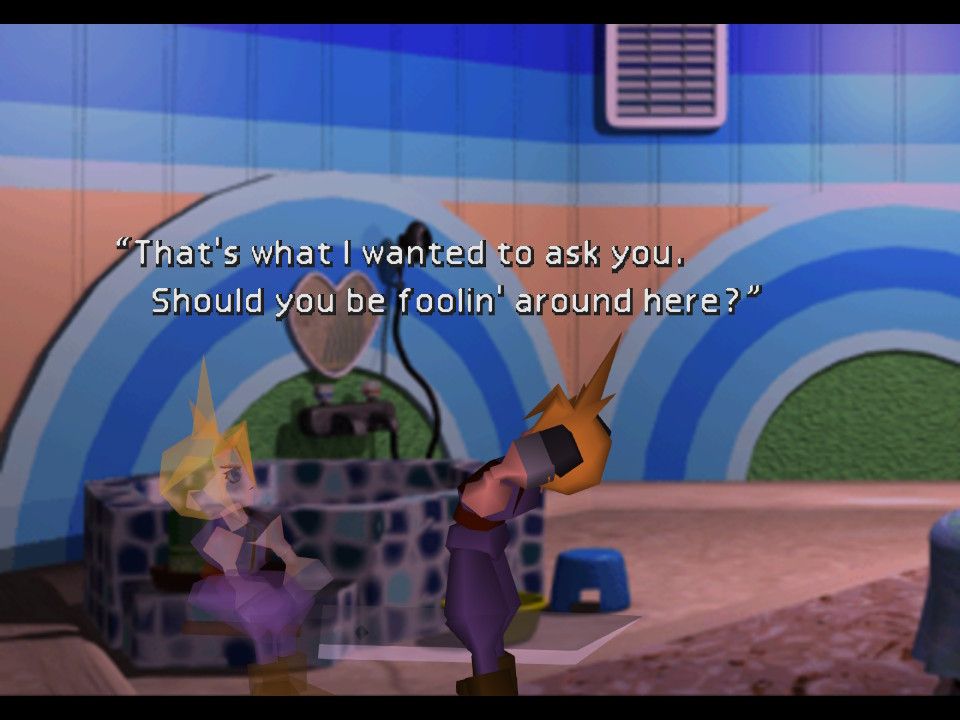
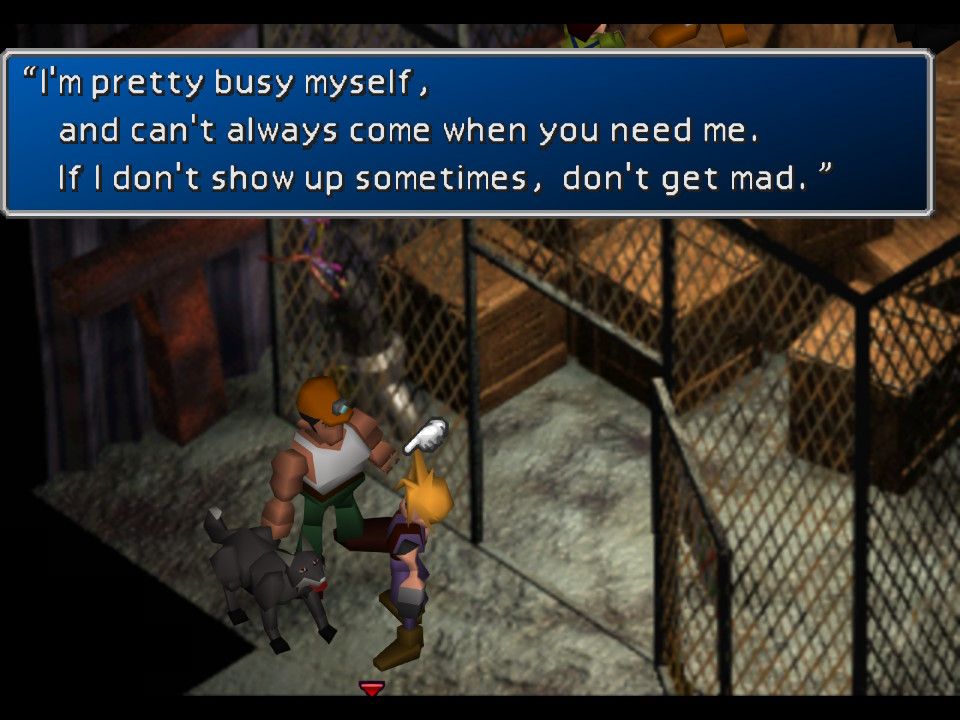
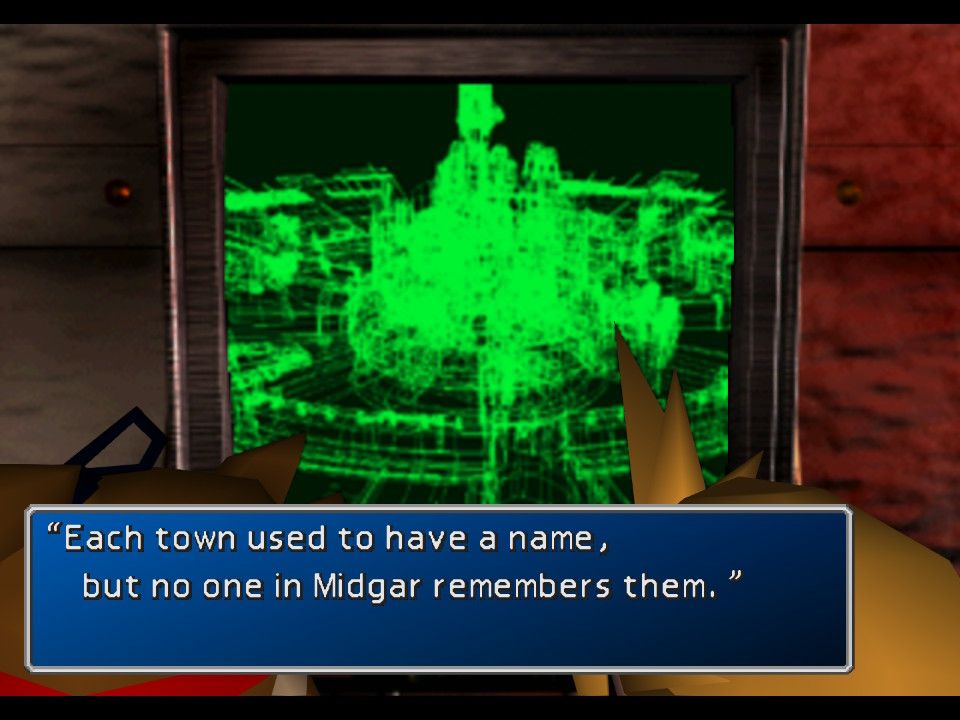


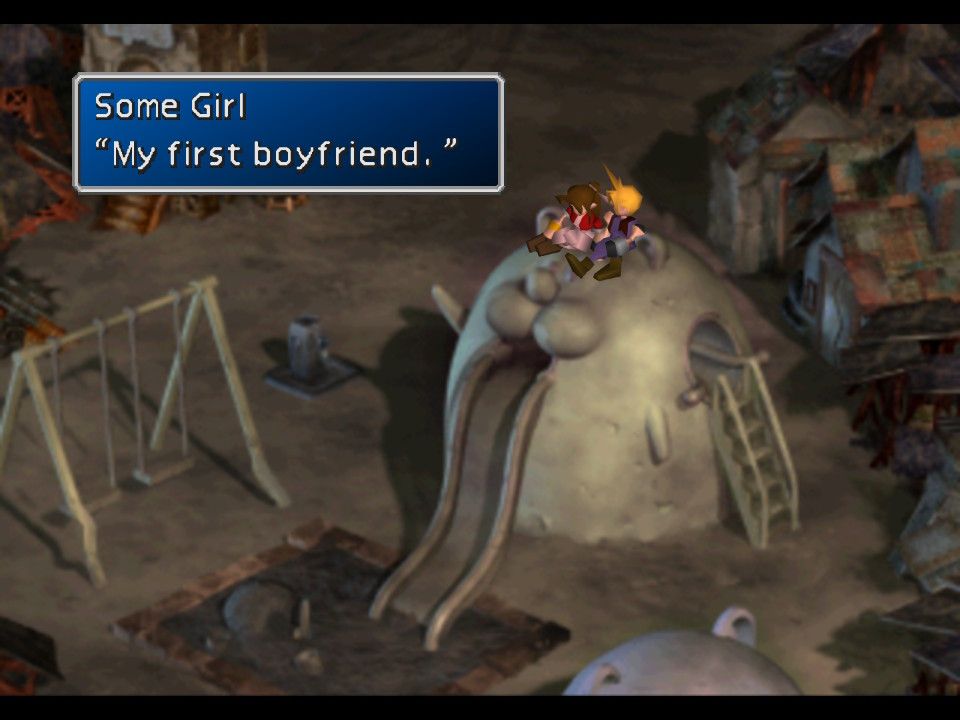
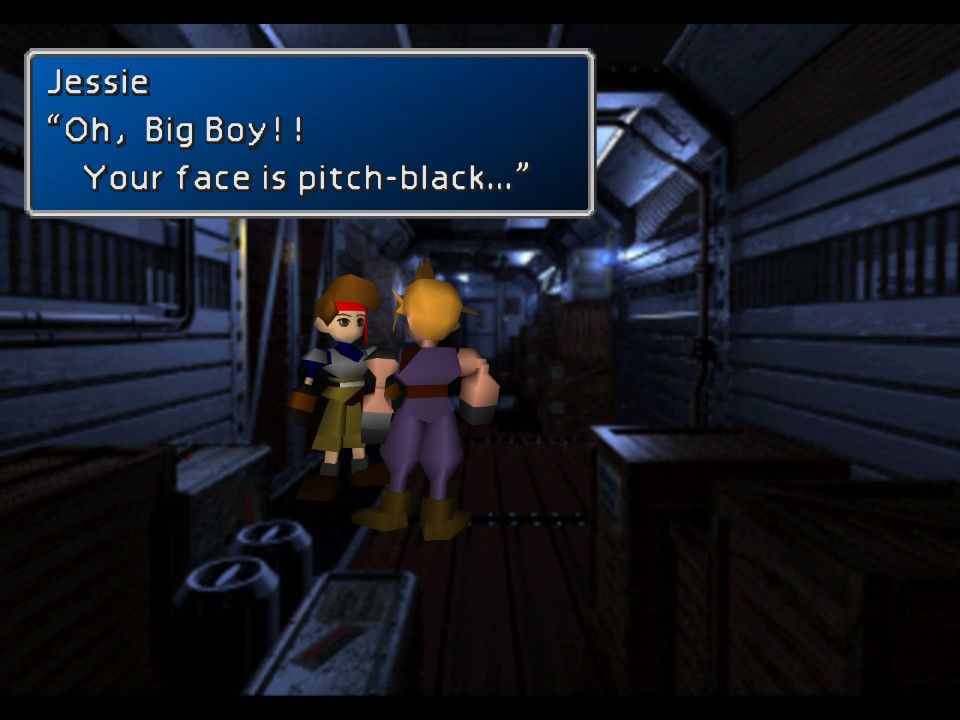
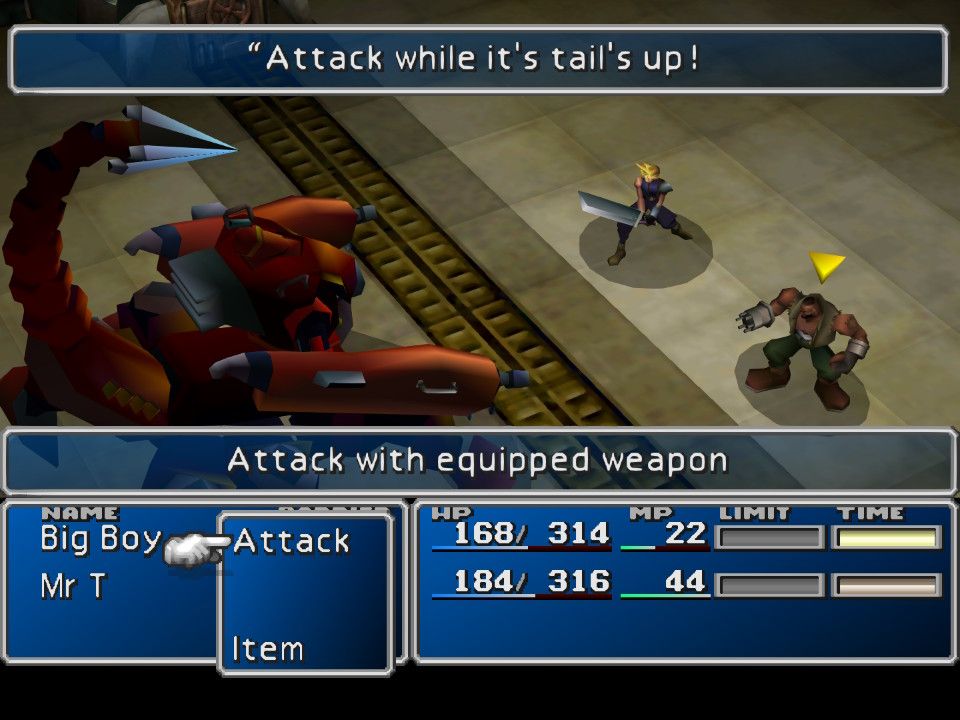
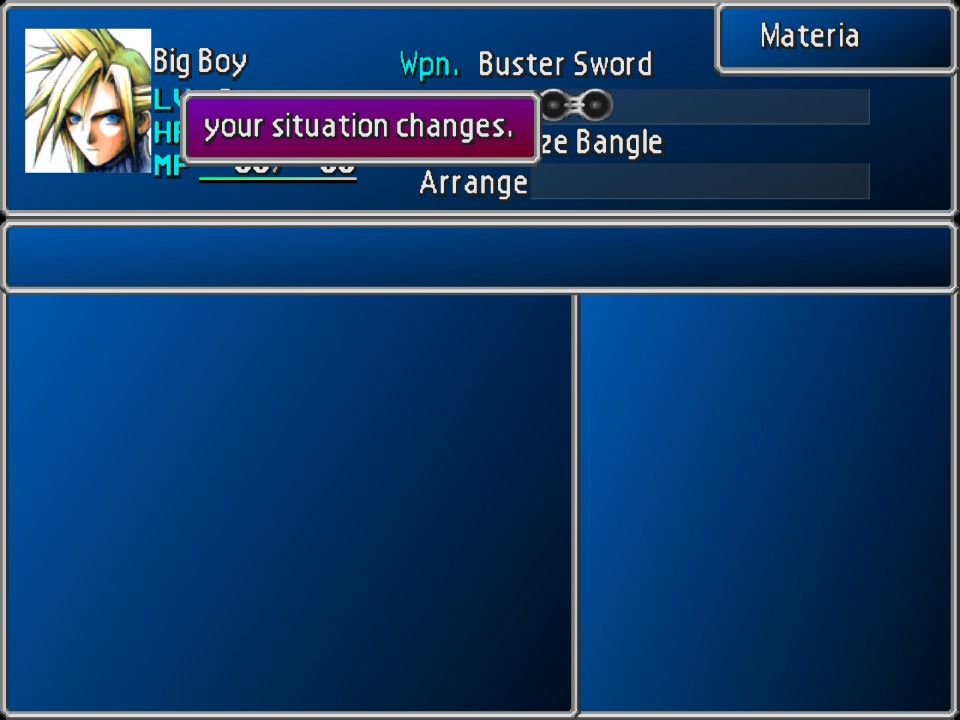

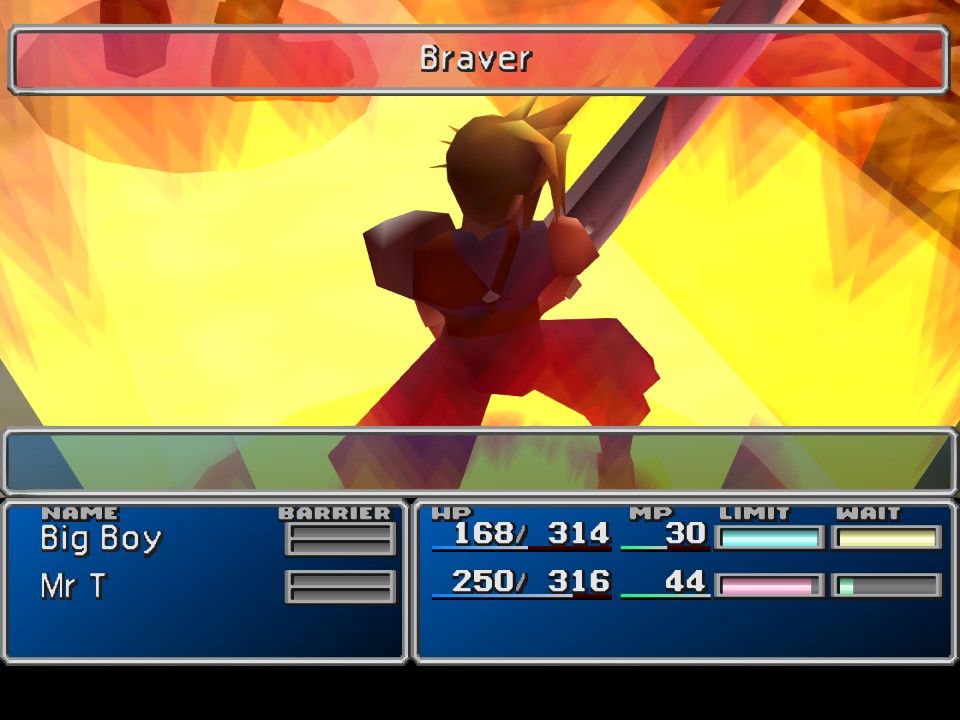
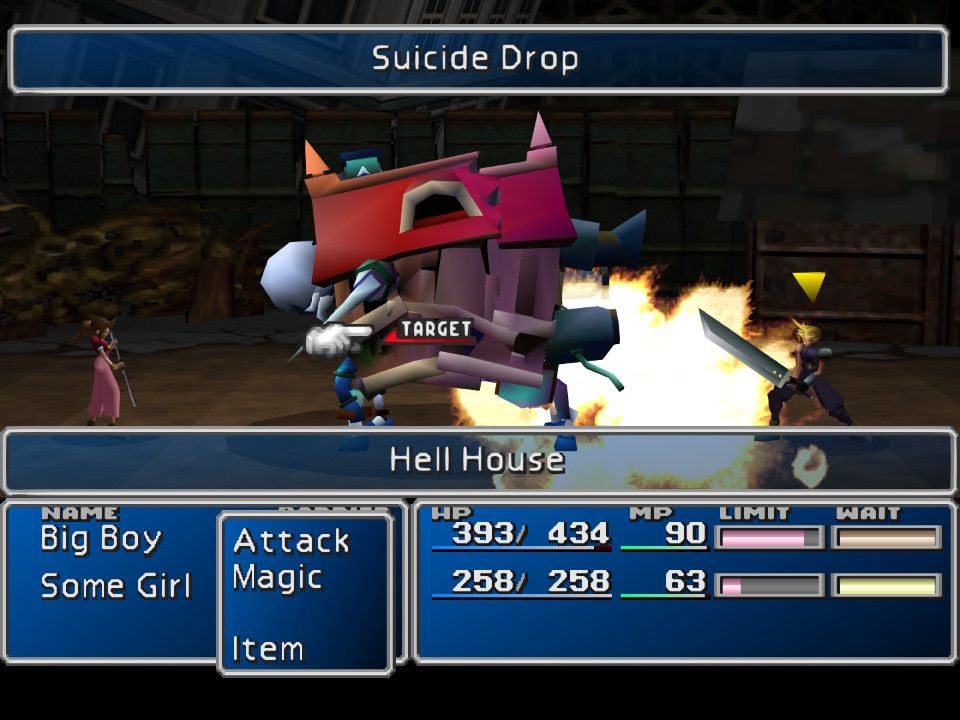
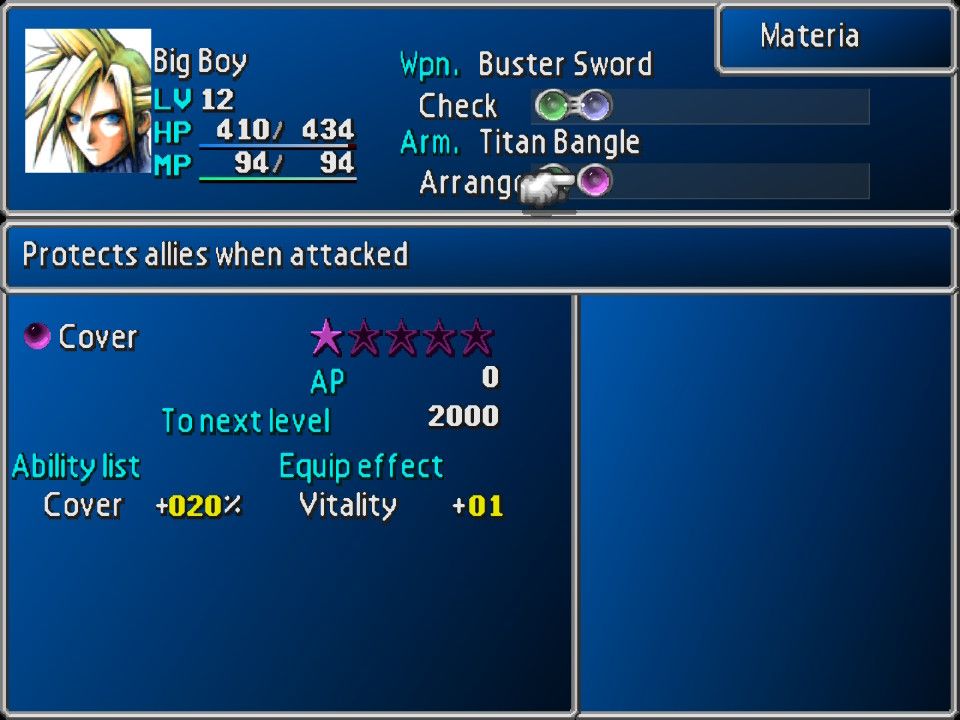

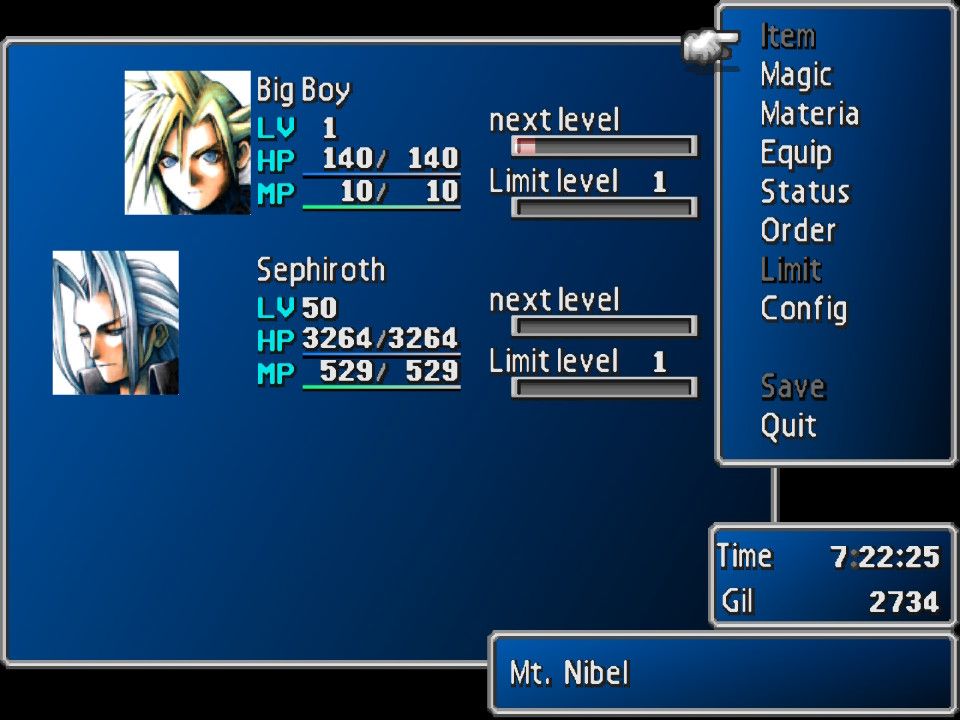
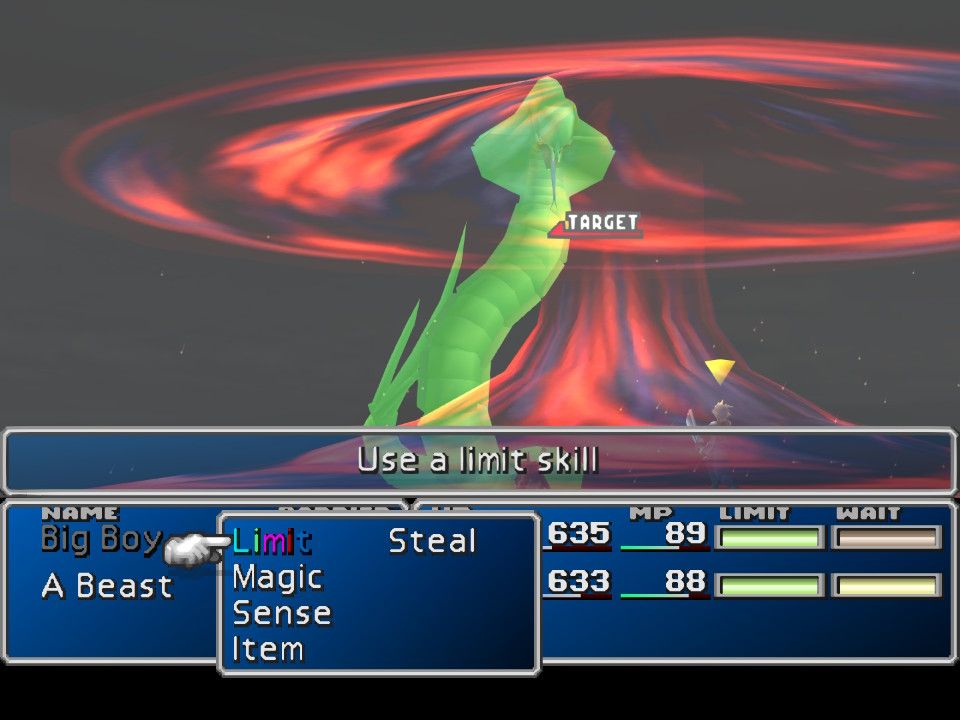
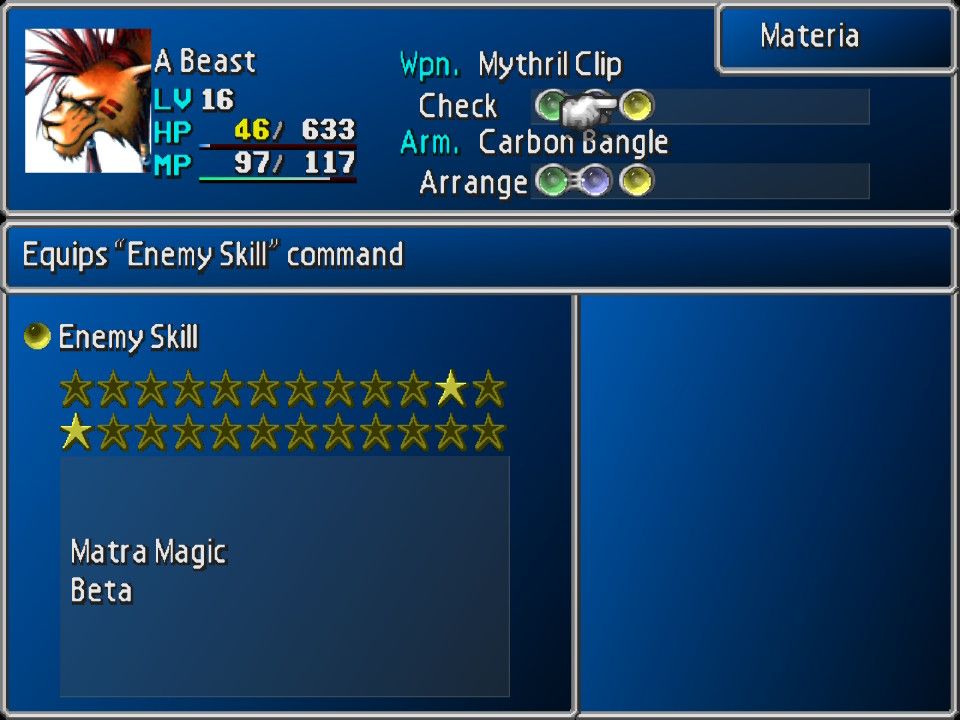
6